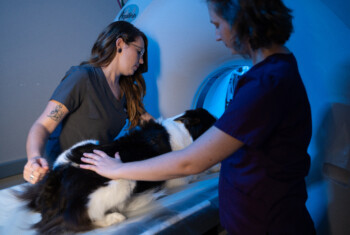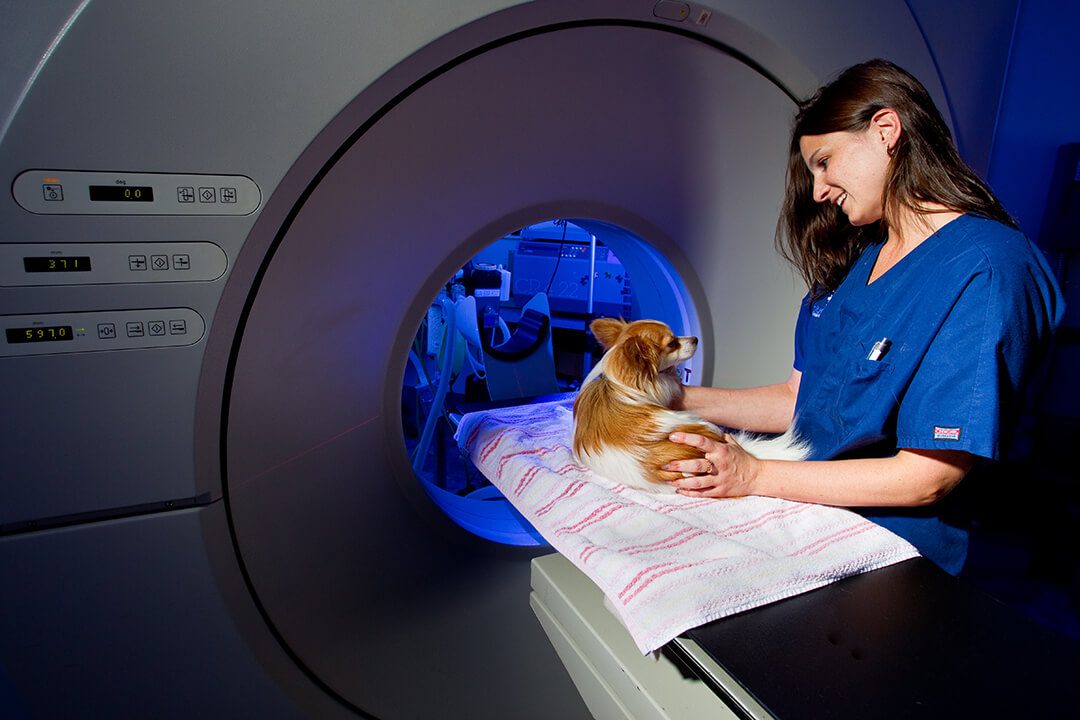Autoimmune skin disease: Causes, symptoms and treatment.
Autoimmune skin disease (AISD) results from a disorder of the immune system in which the animal’s body sees its own skin as foreign. Because of this abnormal immune response, the skin is damaged.
In a sense, the animal is trying to reject its skin, just as it would try to reject a viral or bacterial infection. Various explanations have been proposed for this disorder including genetic, environmental, drug and viral factors. In dogs, there is some evidence of a genetic component, as AISD is seen more commonly in certain breeds (Akitas, collies, shelties, chows, Dobermans).
Because early recognition of AISD is important to prevent complications down the road, it can be beneficial to identify your dog’s breed and discuss it with your veterinarian. They can help determine if your dog may have a genetic predisposition or if they have the disease, giving you and your pet a head start on treatment. If you’re not sure how to find out what breed your dog is, start with a breed identifier, which can help you identify breed characteristics beyond just physical appearance.
Symptoms.
 Most cases of AISD occur in mature animals with skin lesions first appearing as small red spots that rapidly form a blister, then a pustule or pimple, and finally a crust. In most cases, the major lesions noted by the owner are red spots, ulcers and thick crusts (scabs) that form over the spots. The crusts usually start on the nose, around the eyes and on the earflaps but may also involve the footpads, mouth, anus and genitals. Itchiness is variable. Other signs commonly noted are depression, lethargy, anorexia, lameness, enlarged lymph nodes and fever.
Most cases of AISD occur in mature animals with skin lesions first appearing as small red spots that rapidly form a blister, then a pustule or pimple, and finally a crust. In most cases, the major lesions noted by the owner are red spots, ulcers and thick crusts (scabs) that form over the spots. The crusts usually start on the nose, around the eyes and on the earflaps but may also involve the footpads, mouth, anus and genitals. Itchiness is variable. Other signs commonly noted are depression, lethargy, anorexia, lameness, enlarged lymph nodes and fever.
Diagnosis.
The definitive diagnosis of AISD should always be made prior to treatment as numerous other diseases can look like AISD. Several tests are necessary to diagnose AISD. Blood tests along with cultures and skin biopsies are needed to diagnose if AISD is present, and if so, what type. Sometimes, due to the waxing and waning nature of the AISD, the initial biopsy results are negative making it necessary to perform more biopsies at a later time.
Treatment.
 Once the diagnosis has been made, treatment involves using different immunosuppressive medications, all of which are very potent agents and can cause serious side effects with chronic use. A baseline blood panel will be done initially and periodically during treatment to monitor for adverse drug effects.
Once the diagnosis has been made, treatment involves using different immunosuppressive medications, all of which are very potent agents and can cause serious side effects with chronic use. A baseline blood panel will be done initially and periodically during treatment to monitor for adverse drug effects.
In most cases, pets with AISD can be controlled with only rare flare-ups, but they must be treated for life. Some cases cannot be controlled. Currently, there is no test to determine which dogs will respond to treatment and which ones will not. It may be necessary to try several different drugs or combinations of drugs before determining whether or not your pet’s disease is controllable.
If you think your pet may be showing signs of autoimmune skin disease, ask your vet for a referral to a veterinary dermatologist. BluePearl offers dermatology services in many of our pet hospitals. Search for a BluePearl dermatologist near you.


